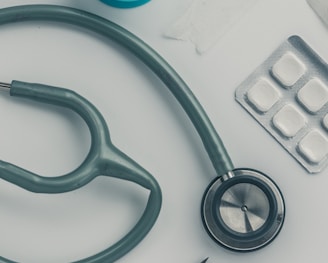The Essential Role of Buprenorphine Doctors in Suboxone Clinics
Introduction
Opioid addiction has emerged as a significant public health crisis, impacting millions of individuals and families globally. The devastating effects of this epidemic necessitate effective, sustainable treatment strategies that can help individuals regain control over their lives. Suboxone clinics play a critical role in this battle, offering comprehensive treatment plans centered around medications like buprenorphine. In this context, buprenorphine doctors are pivotal. They provide the medical expertise required to administer treatment safely and effectively, ensuring patients receive the support they need throughout their recovery journey.
This article explores the essential role of buprenorphine doctors within suboxone clinics, highlighting their responsibilities, the benefits of buprenorphine treatment, and how their work contributes to the overall health and well-being of patients.
Understanding Opioid Addiction and Treatment
The Opioid Crisis
The opioid crisis is characterized by a dramatic increase in the use of prescription and non-prescription opioid drugs, leading to widespread addiction and overdose deaths. Factors contributing to this crisis include over-prescription of painkillers, the availability of cheap heroin, and the emergence of potent synthetic opioids like fentanyl. Addressing this crisis requires a multifaceted approach, combining medical treatment, psychological support, and community resources.
Suboxone and Buprenorphine
Suboxone is a medication used in Medication-Assisted Treatment (MAT) for opioid addiction. It contains two active ingredients: buprenorphine and naloxone. Buprenorphine is a partial opioid agonist, meaning it can produce similar effects to opioids but to a much lesser degree, helping to alleviate withdrawal symptoms and cravings without the same risk of misuse. Naloxone is an opioid antagonist that blocks the effects of opioids, reducing the potential for misuse of the medication.
The Role of Buprenorphine Doctors
Buprenorphine doctors are medical professionals specially trained and certified to prescribe buprenorphine for opioid addiction treatment. Their role encompasses a wide range of responsibilities, from initial patient assessment to ongoing care and support.
Initial Assessment and Diagnosis
The first step in treating opioid addiction is a thorough assessment and diagnosis. Buprenorphine doctors evaluate patients to determine the severity of their addiction, any co-occurring disorders, and their overall health status. This comprehensive assessment is crucial for developing an effective, personalized treatment plan.
Prescribing Buprenorphine
One of the primary responsibilities of buprenorphine doctors is prescribing buprenorphine. They must ensure that the dosage is appropriate for the patient's level of addiction and that the medication is taken as prescribed. This involves careful monitoring and adjustments to the treatment plan as needed.
Monitoring and Adjusting Treatment
Opioid addiction treatment is a dynamic process that requires regular monitoring and adjustments. Buprenorphine doctors track patients' progress through regular check-ups, urine tests, and other monitoring tools. They adjust dosages or switch medications if necessary to ensure the best outcomes for their patients.
Providing Comprehensive Care
Beyond prescribing medication, buprenorphine doctors provide comprehensive care that includes counseling, behavioral therapy, and support for co-occurring mental health disorders. This holistic approach is essential for addressing the complex nature of addiction and promoting long-term recovery.
The Benefits of Buprenorphine Treatment
Buprenorphine treatment, when administered by qualified doctors, offers several benefits for individuals struggling with opioid addiction.
Reduced Withdrawal Symptoms and Cravings
Buprenorphine helps to reduce the intense withdrawal symptoms and cravings that often accompany opioid addiction. This makes it easier for individuals to abstain from opioid use and engage in other aspects of their treatment.
Lower Risk of Overdose
As a partial opioid agonist, buprenorphine has a ceiling effect, meaning its effects level off at a certain point. This reduces the risk of overdose compared to full opioid agonists like heroin or methadone.
Improved Retention in Treatment
Studies have shown that patients receiving buprenorphine treatment are more likely to remain engaged in their treatment programs compared to those who do not receive medication-assisted treatment. This improved retention is crucial for long-term recovery.
Enhanced Quality of Life
By reducing withdrawal symptoms and cravings, buprenorphine allows individuals to focus on rebuilding their lives. This includes improving their physical and mental health, repairing relationships, and achieving personal and professional goals.
Buprenorphine Doctors in Suboxone Clinics: A Case Study
To illustrate the impact of buprenorphine doctors, let's consider a hypothetical case study.
Patient Background
John is a 35-year-old man who has struggled with opioid addiction for ten years. He started using prescription painkillers after a severe injury and eventually transitioned to heroin. John has attempted to quit multiple times but has always relapsed due to severe withdrawal symptoms and cravings.
Initial Assessment
John visits a suboxone clinic where he meets with Dr. Smith, a buprenorphine doctor. Dr. Smith conducts a comprehensive assessment, including a physical exam, a review of John's medical history, and a discussion of his addiction history and previous treatment attempts.
Treatment Plan
Based on the assessment, Dr. Smith prescribes a starting dose of buprenorphine and schedules regular follow-up appointments to monitor John's progress. In addition to medication, Dr. Smith refers John to a therapist for counseling and enrolls him in a support group.
Ongoing Care
Over the next few months, Dr. Smith adjusts John's buprenorphine dosage as needed and addresses any side effects. John participates in therapy and support group meetings, which help him develop coping strategies and build a support network.
Outcomes
With the help of buprenorphine treatment and comprehensive care, John manages to stay sober. He finds a new job, rebuilds his relationships, and continues to work on his recovery.
Challenges and Considerations in Buprenorphine Treatment
While buprenorphine treatment offers many benefits, there are also challenges and considerations that buprenorphine doctors and patients must navigate.
Stigma and Misconceptions
Despite its effectiveness, medication-assisted treatment for opioid addiction is often stigmatized. Some people mistakenly believe that using medications like buprenorphine is simply replacing one addiction with another. Buprenorphine doctors play a crucial role in educating patients, families, and the community about the benefits and legitimacy of MAT.
Access to Treatment
Access to buprenorphine treatment can be limited by several factors, including geographic location, availability of certified doctors, and insurance coverage. Efforts to expand access to MAT are essential for addressing the opioid crisis on a larger scale.
Adherence to Treatment
Adherence to buprenorphine treatment can be challenging, especially in the early stages of recovery. Buprenorphine doctors must work closely with patients to address any barriers to adherence, such as side effects, lack of support, or co-occurring disorders.
Regulatory and Policy Considerations
The regulation of buprenorphine prescribing is designed to ensure patient safety, but it can also create barriers to treatment. Buprenorphine doctors must navigate these regulations while advocating for policies that improve access to care.
Conclusion
Buprenorphine doctors are essential to the effective functioning of suboxone clinics, providing the medical expertise and comprehensive care needed to support individuals in their recovery from opioid addiction. Their role in assessing, prescribing, and monitoring treatment is critical for ensuring that patients receive the best possible care. By addressing the physical and psychological aspects of addiction, buprenorphine doctors help patients reclaim their lives and work towards long-term recovery.
As the opioid crisis continues to evolve, the importance of buprenorphine doctors and suboxone clinics cannot be overstated. These professionals not only save lives but also contribute to healthier communities by providing sustainable, science-backed treatments for opioid addiction. Through continued education, advocacy, and innovation, buprenorphine doctors can help shape a future where effective treatment is accessible to all who need it.


